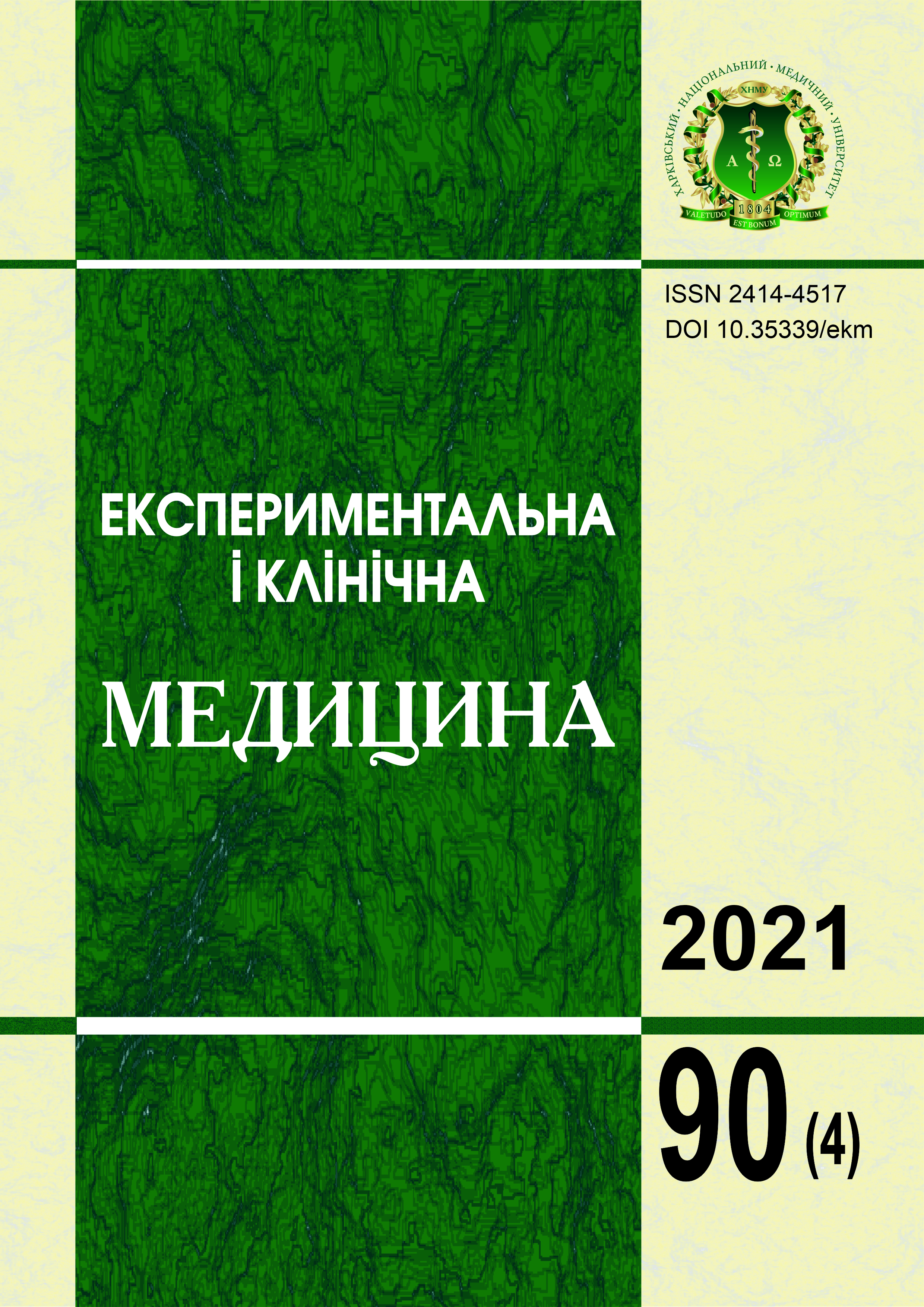Abstract
The problem of providing full-fledged higher education while training qualified specialists is currently an urgent task of medical universities not only in Ukraine, but also in the entire civilized world. In recent years, the number of international students studying in English has significantly increased at the Kharkiv National Medical University (approximately 3,500 from 85 countries). One of the most important pedagogical tasks of any higher educational institution is work with students, aimed at faster and more successful adaptation of them to the system of education, to the new system of social relations, to their mastering the new role of students. 372 international English-speking students of I–VI courses of the Kharkiv National Medical University, of both sexes (223 men, 149 women) with an average age of (19±3) years, took part in the study. All examinees were divided into three groups: group I – 194 students from India; group II – 96 students from Asian countries; group III – 82 students from African countries. The main psychosocial risk factors for the development of maladjustment states among international students were identified: change in the life stereotype; necessity for adaptation in a new team; difficult study material, complex terminology; strict academic discipline, mandatory completion of missed classes and lectures. Also, students do not follow the usual daily routine (studying and resting), there is excessive drinking, smoking, they had signs of Internet addiction. The surveyed students note a lack of positive emotions; awareness of an insufficient level of educational preparation; low level of motivation; imperfection of psychological coping mechanisms; lack of self-regulation skills. The data obtained in the course of the study regarding psychodiagnostic manifestations of maladaptive states in students determine the direction of methods for correction and prevention of adjustment disorders in students.
Keywords: adaptation mechanisms, manifestations of maladjustment states, education, medical education.
References
Kozhyna HM, Zelenska KO, Gajchuk LM, Haustov MM, Zelenska HM. A medical-psychological view of the problem of adaptation of English-speaking junior year students to educational activities. Materials of the LI educational and methodical conference "English-language teaching at KhNMU: current state, problems and prospects" (Ukraine, Kharkiv, KhNMU, 31 Jan 2018). P. 54-6. Available at: http://surl.li/gqumu [in Ukrainian].
Markovskyi VD, Katsapov DV, Krainenko OV, Vasylieva OV, Potapov SM, Oliinyk AO, Baliuk OH. Adaptation of foreign students of higher medical educational institutions to the educational process. Materials of the All-Ukrainian educational and scientific conference with international participation "Credit-modular system of organization of the educational process in higher medical (pharmaceutical) educational institutions of Ukraine" (Ukraine, Ternopil, 2014). Part 2. P. 643-4. [In Ukrainian].
Korobchanskyi VO, Rezunenko YuK, Herasymenko OI, Katelevska NM, Bohachova OS. Current issues of formation of motivation to study among students of Kharkiv National Medical University. Medical education. 2018;4:141-4. Available at: http://surl.li/gqumh [in Ukrainian].
Sinajko VM, Khaustov MM. Comprehensive assessment of the dynamics of mental disadaptation of students at a medical higher educational institution. Archive of psychiatry. 2018;24(4(95)):212-5. Available at: http://nbuv.gov.ua/UJRN/apsuh_2018_24_4_11 [in Ukrainian].
Pereira MA, Barbosa MA, de Rezende JC, Damiano RF. Medical student stress: an elective course as a possibility of help. BMC Res. Notes. 2015;8: 430. DOI: 10.1186/s13104-015-1399-y. PMID: 26358029.
Babatina SI. Peculiarities of time perception and experience of students on the stage of adaptation and identification. Science and education. 2013;7:120-5. Available at: http://nbuv.gov.ua/UJRN/NiO_2013_7_28 [in Ukrainian].
Kozhyna AM, Markova MV, Grinevich YG, Zelenskaya EA. The problem of the undergraduate students of universities III-IV accreditation levels. Archives of Psychiatry. 2011:17(4(67)):32-5. Available at: http://nbuv.gov.ua/UJRN/apsuh_2011_17_4_9 [in Ukrainian].
Vashkite I, Khaustov M. Features of the clinical picture of depressive disorders of different registers in university students. Inter Collegas. 2019;2(6):112-9. DOI: 10.35339/ic.6.2.112-119.
Zorach IA, Lipka O. Adjustment to higher education among students with mental health disorders. Higher education research & development. 2022;42(1):1-17. DOI: 10.1080/07294360.2022.2052815.
Hritsuk OV. Students’ emotional states as metacognitive formation. Science and Education. 2014;6:30-4. Available at: http:// nbuv.gov.ua/UJRN/NiO_2014_6_8 [in Ukrainian].
Pshuk NG, Slobodianiuk DP. Role of psychosocial factors in the genesis of social exclusion among student youth. Ukrayinskij visnik psihonevrologiyi [Ukrainian Herald of Psychoneurology]. 2015;23(2(83)):86-91. Available at: http://nbuv.gov.ua/UJRN/Uvp_2015_23_2_21 [in Ukrainian].
Hamilton M. The assessment of anxiety states by rating. Br J Med Psychol. 1959;32:50-5. Available at: https://dcf.psychiatry.ufl.edu/files/2011/05/HAMILTON-ANXIETY.pdf
Hamilton M. A rating scale for depression. J Neurol Neurosurg Psychiatry. 1960;23:56-62. Available at: https://dcf.psychiatry.ufl.edu/files/2011/05/HAMILTON-DEPRESSION.pdf
Spielberger CD. Manual for the State-Trait Anxiety Inventory (STAI). PaloAlto, CA; 1983. 78 p. Available at: http://surl.li/luixh

